There is no doubt that one of the best travel experiences what you can have in your life is make the road to Santiago.
It is said that there are many roads that lead to Santiago, not only from Spain, but also from places in Europe.
But it is basic to differentiate between the the Camino de Santiago and the numerous roads that lead to Santiago de Compostela.
All the information in detail
- 1 Curiosities about the history of the Camino de Santiago
- 2 What is the French Camino de Santiago like in Navarra?
- 3 The best things to see on the Camino de Santiago through Navarra
- 3.1 Pamplona, first cathedral on the Camino de Santiago
- 3.2 Puente la Reina, confluence of the French Way
- 3.3 Torres del Río, octagonal church from the 12th century
- 3.4 From Sangüesa to the Lumbier Gorge
- 3.5 Camino de Santiago through the Baztán Valley
- 3.6 Camino del Ebro, from Tudela to Bardenas Reales
- 3.7 Sakana road, Aralar Sanctuary and Roman road
Curiosities about the history of the Camino de Santiago
From a historical point of view, the the Camino de Santiago which is so popular today, began in the 9th century and had its greatest splendor in the 12th century with pilgrims arriving from the East.
It can be considered that these pilgrims were actually the first tourists.
The path is structured on sacred places of ancestral beliefs where churches and cathedrals have been built.
For the French Way the Romanesque, the Gothic, the religious orders of the Cistercians or the Templars arrived, with the first warrior monks who protected the path and the pilgrims.
La road credential It was established in the 16th century, at the time of Felipe II, and you should know that it is a document that never expires, which makes it easier to follow the path in different periods and even years.
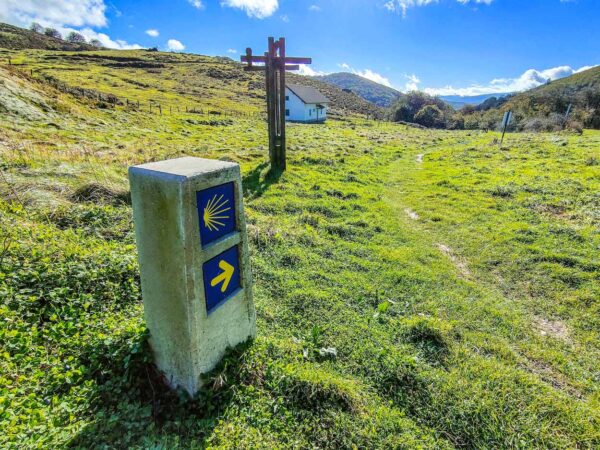
Subsequently, it became an unsafe route and its relevance became less and less.
El the Camino de Santiago As we understand it today, it began relatively recently, in the 80s of the last century, and there are more and more pilgrims who travel through it.
Reasons to do the Camino de Santiago
It is stated that there are many reasons to walk the path, not only because religious feelings, and, in fact, of the 3.000 pilgrims who on average arrive in Santiago every day, only a minority has religious motivation.
Thus, one can decide to take the path pto rediscover yourself, for cultural reasons such as visit heritage and historical sites, to know places wrapped in magic, or even to gastronomic interest.
In this article we want to propose some of the most outstanding heritage and landscape places in Navarra that you will be able to know under the pretext of starting your own the Camino de Santiago.
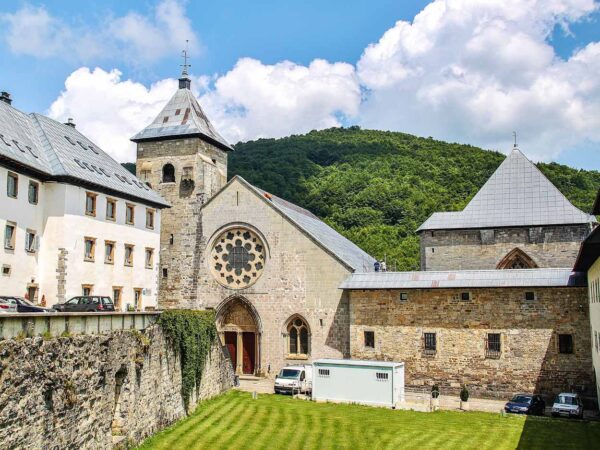
When it comes to doing the route from its beginning in Spain, the most common thing is to do what is known as French Camino de Santiago, which is the best-known and most traveled route by pilgrims arriving from Europe.
It is also the first itinerary of the Camino de Santiago declared World Heritaged awarded by the UNESCO in 1993 and is also the first Cultural Europe itineraryo.
El starting point of the French Camino de Santiago To enter Spain through the Pyrenees it is usually Saint-Jean-Pied-de-Port, a place in the south of France where three of the great Jacobean routes converge.
Specifically, it enters Navarre for the town of Valcarlos, and after passing the Port of Ibañeta, where the first yellow arrow was placed, reaches its first emblematic place, Roncesvalles.
Know that from Roncesvalles to Santiago de Compostela there are 790 km, which can be walked for a month.
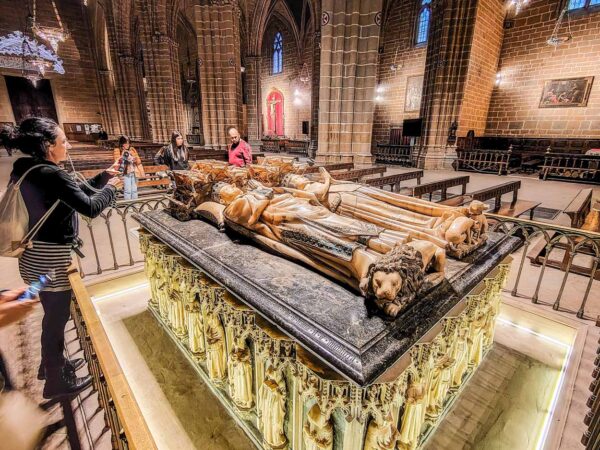
And in particular, from Valcarlos to Viana, place where you will leave Navarra to reach Logroño, there are 160 kilometers which can be traveled in eight days, never more than twenty kilometers a day.
But there is also another entry branch through the Port of Somport in Aragon, and after reaching Jaca, it heads towards Navarra, to join both branches in La Reina Bridge.
This branch is also known as the Aragonese Road.
ORGANIZE your TRIP
- Don't forget your TRAVEL INSURANCE with a 5% discount
- Book the HOTEL for your trip
- RENT a CAR for your trip
- The best TOURS and EXCURSIONS in Spanish
- NO-LINE TICKETS for museums and monuments
- Best FREE TOURS around the world
- Book your TRANSFER from the airport
- eSIM card with INTERNET at the best price
But you have to keep in mind that Up to five referenced paths run through Navarra that pass through places that throughout history have been used by pilgrims, which cover different areas of the community.
In addition to the aforementioned French, with its Camino Aragonés branch, you also have the Baztanes Way, a rural route that has begun to recover with its signage in recent years.
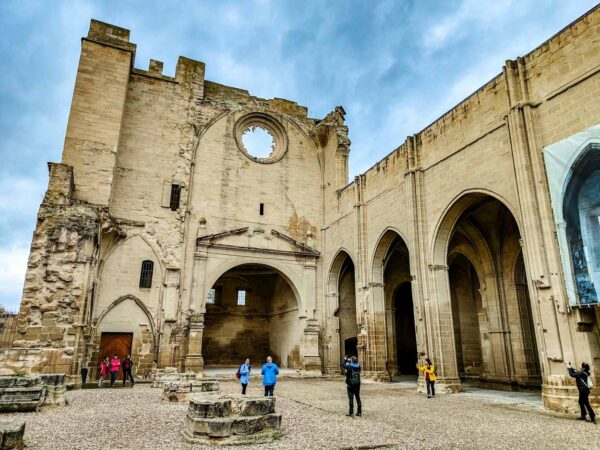
Another alternative is the Ebro Road, also known as the Camino Catalan, which comes from Montserrat and was used by pilgrims arriving from the Mediterranean coast.
And recently the project to recover the Sakana Road, which wants to connect with the one known as Primitive Way.
This has its origin in the 9th century when the tomb of Santiago in Compostela was discovered, and the Asturian king Alfonso II He became the first pilgrim when he wanted to go to see it from Oviedo following an ancient Roman route that ran along the coast.
This Roman road linked Bordeaux with Astorga, passing through the region of Sakana, Vitoria and Burgos.
At that time Compostela became a reference point for Christendom similar to Rome and Jerusalem.

From the tourist point of view, if you do the French Way, riding a Roncesvalles you find a very prominent historical place, with the Collegiate Church of Santa María French Gothic style, where you can visit its museum with outstanding jewels such as the Charlemagne Chess.
An essential corner is the tomb of King Sancho VII the Strong, which measured more than two meters, and you should also visit the Charlemagne Silo, place where his deceased soldiers were buried after the defeat in the Battle of Roncesvalles.
In the nearby town of Burguete you will be able to see several samples of traditional Navarrese architecture.
Pamplona, first cathedral on the Camino de Santiago
This road leads you to the city of Pamplona, where it is worth visiting the first cathedral on the Camino de Santiago in Spain, and inside which you can see one of the best French Gothic cloisters in our country as well as a spectacular refectory.
And in the Navarrese capital you also find the Interpretation Center of the Camino de Santiago, a place where you can see some interesting audiovisuals that show you the history of the path linked to Pamplona.
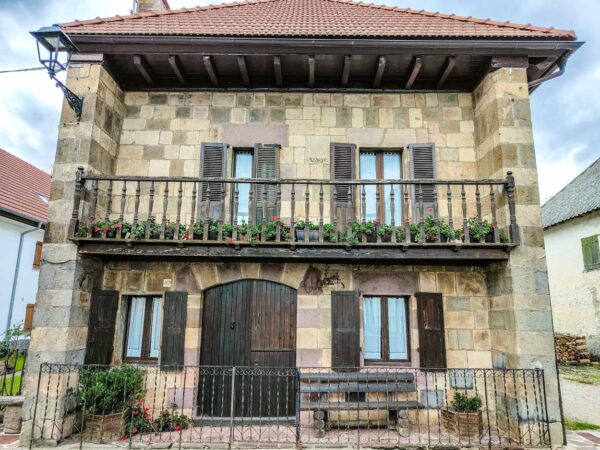
Puente la Reina, confluence of the French Way
Further along the route you will reach Puente la Reina, a medieval town where, as we have mentioned, the two branches of the French Way converge.
Its most notable corner is the romanesque bridge with six arches.
You will reach Estella where you will pass through Curtidores Street and you will see the church of the holy sepulcher with an outstanding 14th century doorway.
Following the Pilgrims Streetyou will see the Kings Palace, the only Romanesque civil building in Navarra, as well as the Prison Bridge or the church of San Pedro de la Rúa Cistercian style, from the 13th century.
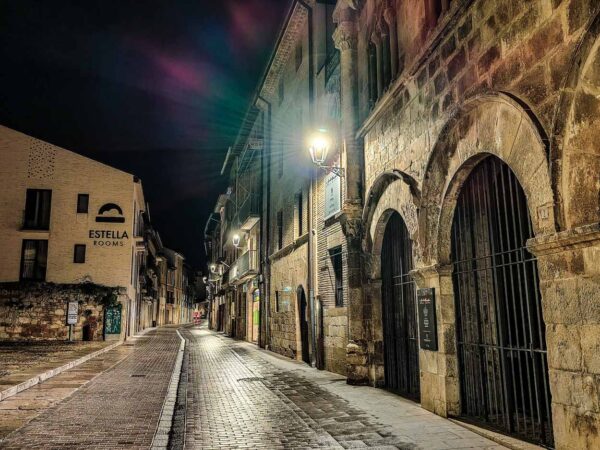
Very close is the Irache monastery, with medieval Renaissance and Baroque buildings, and where the fountain with two spouts, where in one of them you can drink water, and in the other, wine. You choose.
Torres del Río, octagonal church from the 12th century
And before leaving Navarra, in River Towers you will find an architectural gem, the church of the holy sepulcher.
In this octagonal temple of the 12th century, which is thought to have been built by the Templars or Knights of the Holy Sepulcher of Jerusalem.
Don't forget your Travel Insurance
Are you organizing your trip or getaway? Don't leave without take out your travel insurance before, and here we explain why. If you hire it with us, you have a 5% discount
Viana It is the last stage of French Way in Navarra, a town with walls, ancestral houses and churches.
It should be noted that the church of Santa María is located tomb of Caesar Borgia and relics of Mary Magdalene.
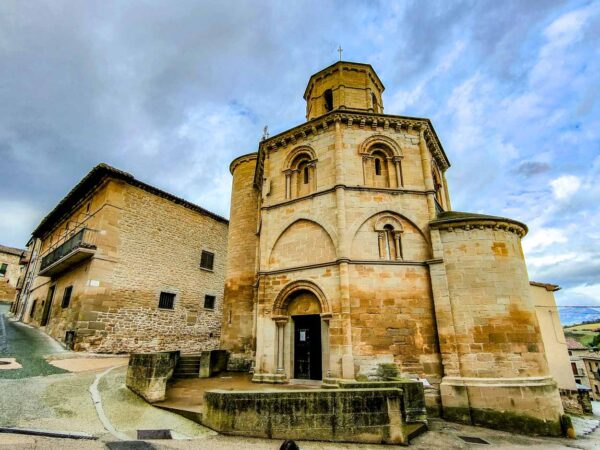
As a curiosity, the park that opens next to the remains of the church of San Pedro is dedicated to Joan Manuel Serrat, with a monolith and where you can hear their songs in the background.
From Sangüesa to the Lumbier Gorge
If you do the French Way arriving to Navarra from Aragon, you will enter through the monumental Sangüesa, where you can see your church of Santa María from the XNUMXth century, as well as various palatial buildings.
Very close is the Javier castle, One Saint francis javier.
If you follow the route through Liédena, you can get closer to see the Leyre monastery although it is not on the road, and then you will pass through the greenway of the old railway that runs through the impressive Foz de Lumbier gorge.
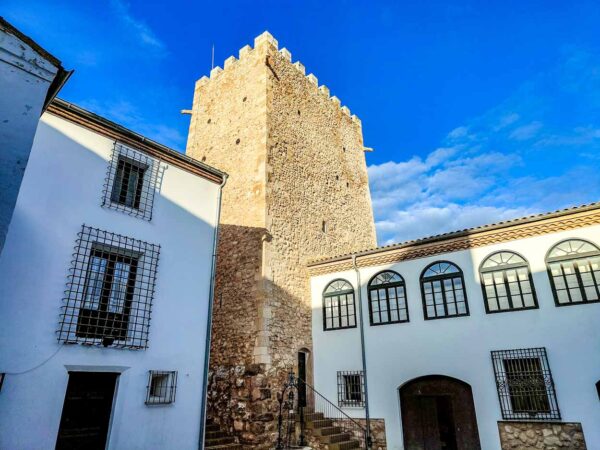
Camino de Santiago through the Baztán Valley
In turn, the Baztan Road It follows the old route traveled by the caravans that went from the port of Bayonne to Pamplona.
You will tour the Baztán Valley and you will pass through beautiful towns like Urdax, Maya o Elizondo, all wrapped in history, mystery and legends, with forested landscapes, palaces and farmhouses.
Camino del Ebro, from Tudela to Bardenas Reales
Finally, if you opt for the Ebro Road, which was followed by the pilgrims who came from the Ebro Delta to join the French Camino de Santiago in Logroño, you will enter Navarra through Cuts, where you can visit its interesting castle.
But there are two key points of tourist interest on this route, Tudela and the possibility of getting closer to knowing the Bardenas Reales natural park.
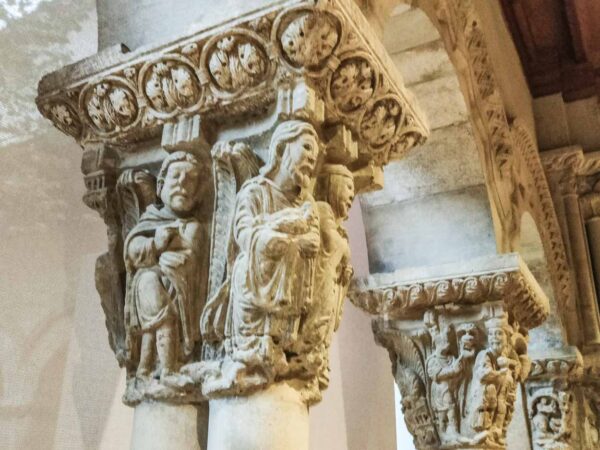
En TudelaIn addition to seeing her pretty Plaza de los Fueros and taste its cuisine with its famous vegetables, you must visit its cathedral.
It highlights its Door of Judgment, from the beginning of the 13th century and Gothic style, and also its cloister with spectacular historic capitals that are preserved originals.
As we have mentioned, of course you should not miss the opportunity to visit the aforementioned natural park, with its semi-desert landscape with almost lunar appearance, which has been the setting for many films and series such as “Game of Thrones".
It is one of the essential landscape corners to see on a trip through Navarra.
Sakana road, Aralar Sanctuary and Roman road
Finally, if you choose to follow the Sakana Road, you have the opportunity to go up to the Aralar Sanctuary, a very prominent pilgrimage site in Navarre, and also walk through the ancient Roman road that goes through the Sakana Valley.
Book your hotel, 15% discount, free cancellation
When planning your trip, we advise you to, well in advance, Book your hotel now on booking.com where you can find discounts from 15% and you will have a possible cancellation for free


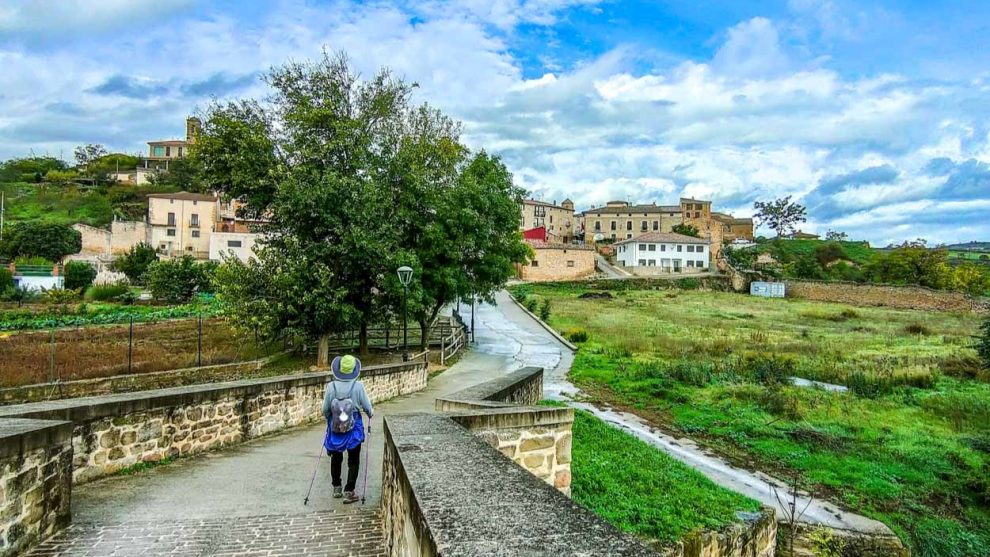


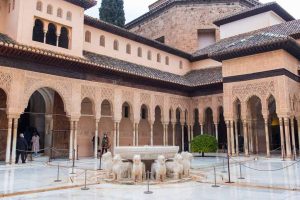











All the explanations about the various routes of the Camino de Santiago are extremely interesting and specifically I want to do a part of it, ism, I have 8 days, plus I am not very good at long days of walking, what do you recommend in this regard? What season is best to do this interesting tour? I will appreciate details to consider my intention, thanks in advance.